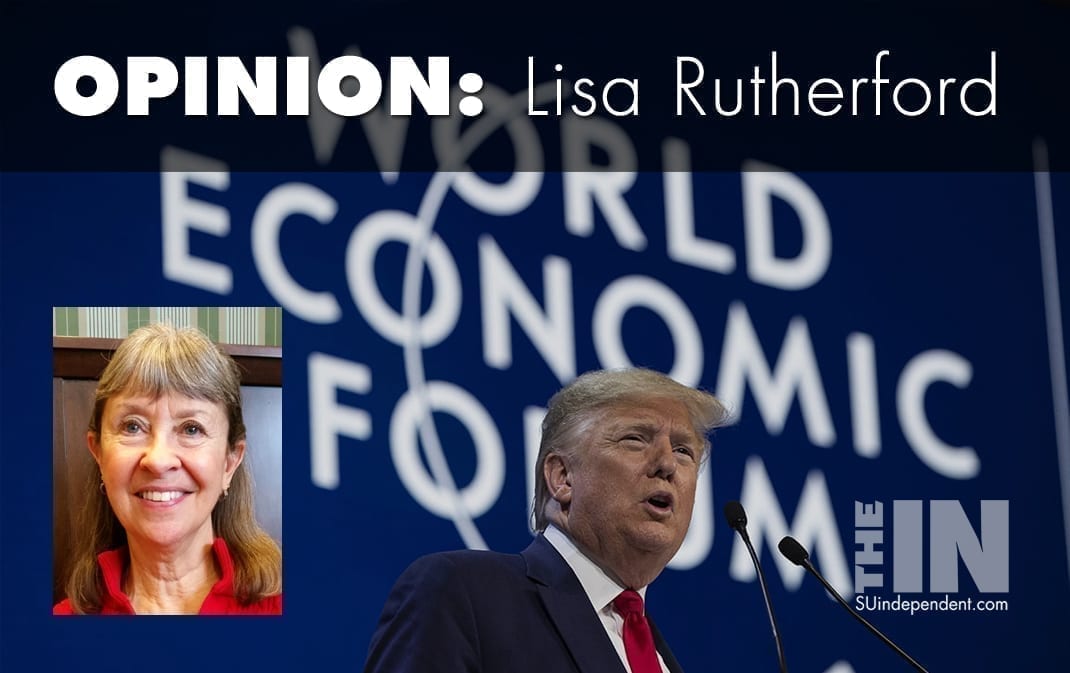
The Economy Under President Trump Not As Rosy As He Tweets
Trump supporters use the economy as a reason to support him. After all, he’s been Tweeting that they should. But is that a reasonable position? Trump and others frequently refer to the stock market as an indicator of our economy’s health. I hate to use the stock market as an indicator because so many citizens don’t even participate in the stock market (other than as consumers supporting the companies in the stock market, and that’s not necessarily a good thing for those citizens financially). But since the president touts it, let’s see what happened during the past ten years.
According to U.S. News and World Report’s November 2019 report: “The current bull market, which began in March 2009, turns 129 months old in December. The next-longest uninterrupted rally began in 1990 and lasted for 113 months. It ended with the bursting of the dot-com bubble.”
Clearly, this rally—that was stopped cold by the pandemic but now is clawing back—did not start under Trump’s watch.
In January 2009 when Obama first came into office the Dow Jones was around 13,000. It dipped to 6,547 in March of 2009 during the Great Recession. In early 2017 when Obama left office after the 2016 election, the market was around 21,000—a 14,000+ gain (1,750 per year for 8 years). That’s the point at which Trump took the reins. From the 21,000 level, the Dow went up to 29,551 in early February 2020 before the coronavirus pandemic hit. That’s a gain of 8,551 or 2,850 per year for 3 years. Now, granted, that’s a bigger annual increase than Obama’s, but Obama dug us out of the Great Recession, while Trump has been riding on the coattails of Obama’s success and has been touting his success ever since with most supporters never really checking to see how that came about.
What about job creation under Trump? How does that compare? Because that’s what really matters in people’s lives. The market can be going great guns for many very complex reasons, but the market’s increase doesn’t impact people’s lives as much as jobs do, although a healthy market can equate to job creation.
So, how does this tie into Trump’s job creation during his time in office and compare with Obama’s? I’ve excluded Obama’s worst year, 2009, and Trump’s worst year so far, 2020. During Obama’s years in office (2010 to 2016) he averaged 2,236,571 jobs per year. Trump’s first three years (2017, 2018, and 2019) averaged 2,195,000 jobs per year. Obama’s highest year of job creation was 2014 at 3,005,000. Trump’s highest year of job creation was 2018 at 2,264,000. So, the job growth numbers may not seem that far off, but with an average of 2,236,571 (Obama) versus 2,195,000 (Trump), that’s a 41,571 job difference. If you’re one of the 41,571 people that got a job while Obama was president, it’s a big deal! Again, as I stated previously, Obama was bringing the nation out of the Great Recession. Obama’s highest year of job creation, 2014, compared to Trump’s highest year in 2018 resulted in a whopping 741,000 jobs—jobs surely much appreciated in 2014 after the Great Recession years. By the time Trump got the economy, it was already moving along with a nice head of steam in what is considered one of the best economic periods we’ve had.
The Black community is in turmoil currently, and that’s not just because of George Floyd, Breonna Taylor, and others. There is a lot of built-up angst in the Black community much of that tied to jobs. So, how have Blacks fared under Trump and Obama? Just coming out of the 2007-2009 Great Recession, Black unemployment hit a high of 16.8% in March of 2010. It’s fair to say that the Blacks were hit hard by the Great Recession. Six years later, by December 2016 when Obama was getting ready to leave office, the rate was down to 7.9%. So, they were coming out of the dire situation pretty well even before Trump took office. Unemployment continued that already established a downward trend to a low of 5.4% in August 2019, three years later, but by January 2020, even before the pandemic, Black unemployment was back up to 6% and hit 16.8% in May 2020. In August 2020 it was 13%.
Blacks make up one of the biggest racial/ethnic voting groups in this year’s election. It’s obvious that the years under Obama provided support for Blacks, in spite of the persistent job gap (white jobs exceeding others). Will that be reflected in this November’s election with their support of Joe Biden? Hispanics are projected to lead the pack of eligible voters at 13.3%. Blacks follow at 12.5%, but that lower number may be made up by Black’s more reliable voting record than Hispanics’. A third of eligible voters will be nonwhite in this 2020 election.
So, what about whites and the economy? How have they fared under Trump? They are the ones who generally support Trump, apparently because they feel they were so mistreated under Obama and for other reasons not pertaining to the economy. Did they fare poorly under Obama?
“Snopes.com” which claims to be “an independent publication owned by Snopes Media Group” researched non-farm job creation under Trump and Obama. They admit that these comparisons can be challenging and so used five different but common methods to create the comparison. All five methods showed superior job growth under Obama’s administration. So, given that Blacks fared well under Obama even considering the job gap between whites and non-whites, one must assume that whites fared well under Obama generally.
According to Reuters, the racial jobless gap between whites and others moved to the widest in five years in June 2020. If anyone should be complaining about jobs it should be Blacks because there is always a gap with Blacks having far fewer jobs. Certainly, this also plays into the anger we are now witnessing in the BLM protests.
How the economy under Trump’s administration evolves remains to be seen. Comparing economies under different presidents is challenging. However, FactCheck.org (A Project of The Annenberg Public Policy Center) also analyzed the Obama data and have “a reasonably complete statistical picture of the Obama years, which began in the middle of the worst economic downturn since the Great Depression, and ended with the highest level of household income ever recorded.”
Obama left office with a job approval rating above 50 percent. He left Trump an economy that was doing very well! Joe Biden was not only Obama’s VP but also a close advisor to Obama during his two terms. Take that however you want as you think about this November’s election.
Finally, I offer this from Forbes (Feb 2020):
“The U.S. Bureau of Economic Analysis released its first estimate for the December quarter and it shows the economy growing at 2.1%. For 2019 GDP growth was 2.3%, which is down from 2.9% in 2018 and just below 2.4% in 2017, Trump’s first year in office.
Over the 12 quarters, Trump has been President only four of them have had GDP growth over 3% and six of the quarter’s growth was 2.3% or lower. And for the past three quarters GDP growth has been 2.0%, 2.1%, and 2.1%, respectively. This is a far cry from Trump’s claim that the economy could growth 4%, 5% or maybe even 6% when he was President. “
Happy voting!
Viewpoints and perspectives expressed throughout The Independent are those of the individual contributors. They do not necessarily reflect those held by the staff of The Independent or our advertising sponsors. Your comments, rebuttals, and contributions are welcome in accordance with our Terms of Service. Please be respectful and abide by our Community Rules. If you have privacy concerns you can view our Privacy Policy here. Thank you!
Click here to submit an article, guest opinion piece, or a Letter to the Editor




